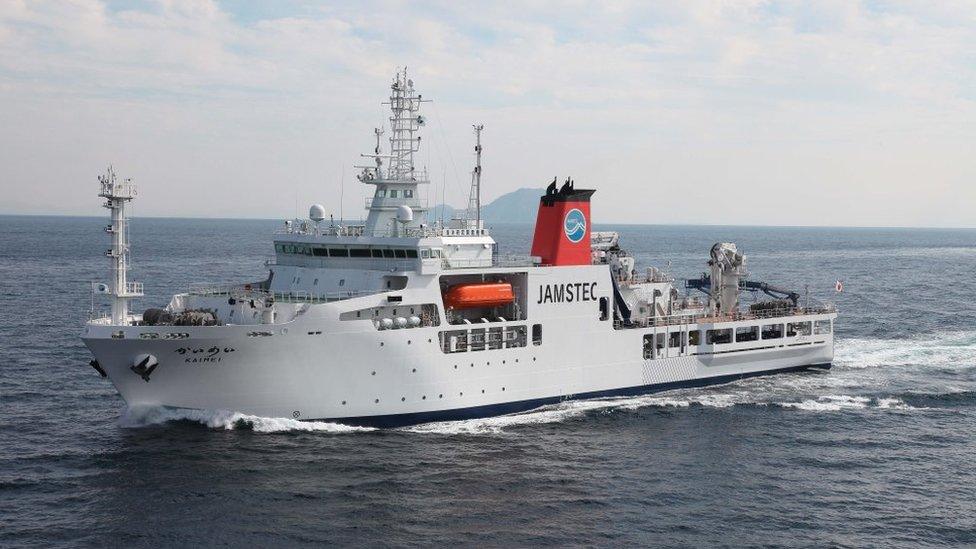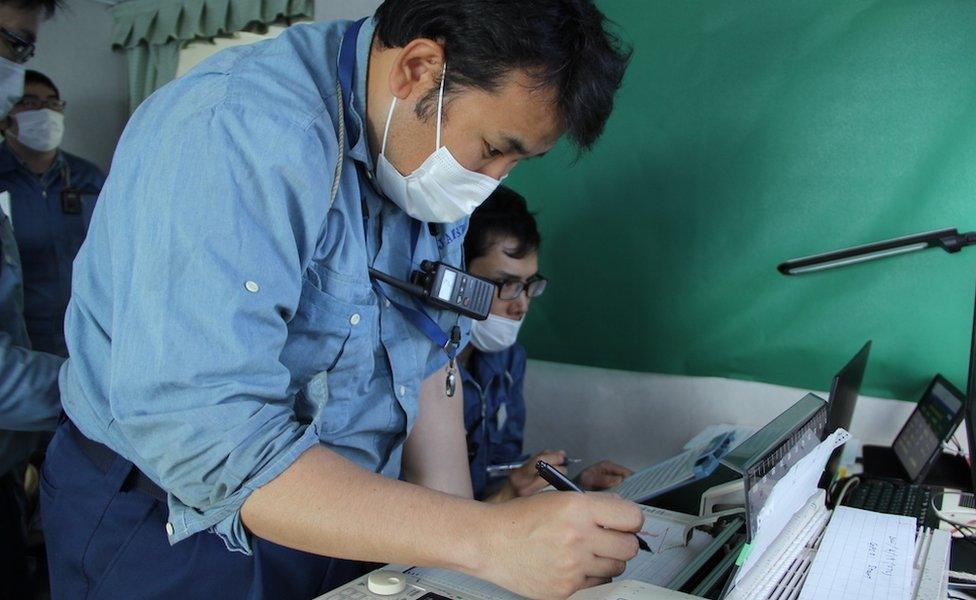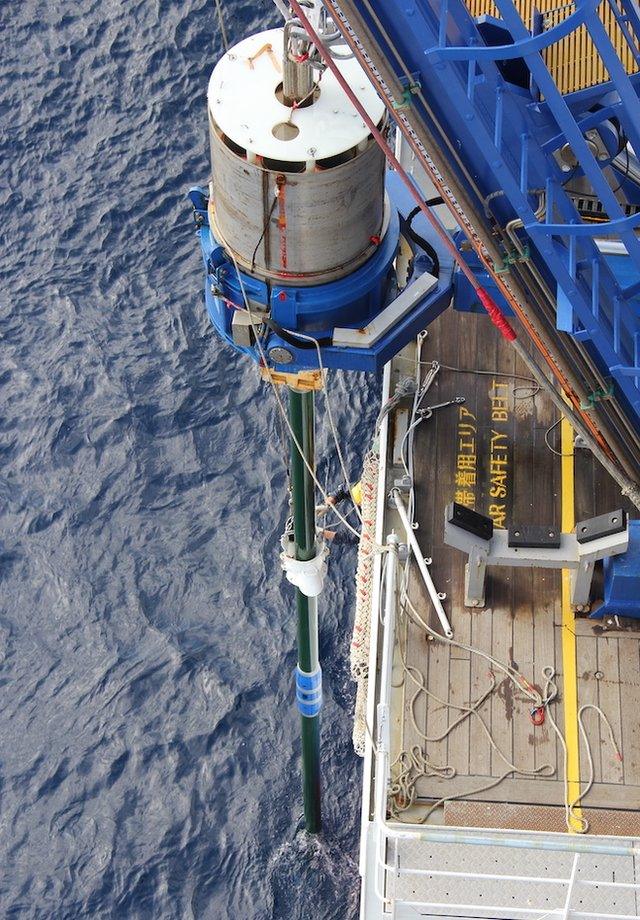Science drill ship sets depth record off Japan
- Published

RV Kaimei had to lay out a length of cable for the corer that was twice the height of Mt Fuji
A new deep-ocean record has been set for a scientific drilling operation.
Researchers working off the coast of Japan lowered a giant piston corer through more than 8km of water in order to pull sediments from the seabed.
It took two hours and 40 minutes simply for the equipment to descend into position above the ocean floor.
The drilling exercise, mounted from the Research Vessel Kaimei, is part of a project to read the history of great earthquakes in the region.
The chosen core site in the Japan Trench is very close to the epicentre of the Magnitude 9.1, Tohoku-oki event in 2011, which also produced a tsunami that devastated communities on the nation's eastern seaboard, and knocked out the Fukushima nuclear plant.
The 37m of sediment retrieved by the piston corer will hopefully preserve details of much older quakes - those that occurred before any written accounts.

The expedition team follows the descent and corer operation
Prof Michael Strasser, co-expedition leader from the University of Innsbruck, wrote in the project blog, external: "We greatly acknowledge the tremendous efforts of the captain and his crew to safely carry out such challenging ultra-deep water-coring operations, and look forward to now undertaking scientific analyses on these samples from the deepest of the deep."
The previous deepest-water drill record was set further to the south in the Pacific Ocean by the RV Glomar Challenger. It recovered sediments from 7km down in the Mariana Trench in 1978.
Fukushima 10 years on: How the 'triple disaster' unfolded
The current expedition (#Exp386), external has been staged by the European Consortium for Ocean Research Drilling (Ecord), as part of the International Ocean Discovery Program (IODP). It is supported by the Japan Agency for Marine-Earth Science and Technology (Jamstec).
The record coring occurred on the morning of Friday, 14 May, at a water depth of 8,023m (26,322ft).
The deepest hole ever drilled on land was the famous Kola Superdeep Borehole in Russia's far north, which reached a true vertical depth of 12,262m (40,229ft), in 1989.

It took two hours and 40 minutes for the corer to get into position
